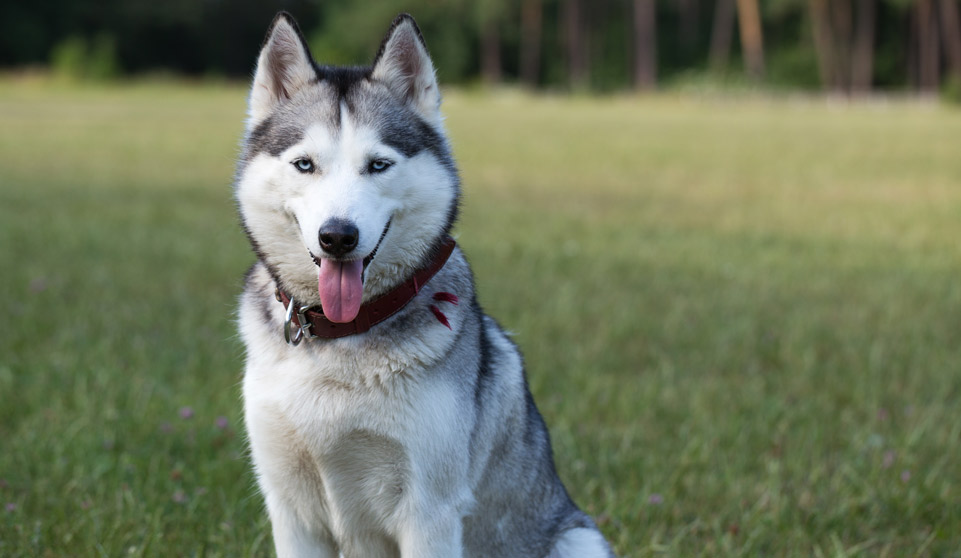Siberian Husky Information

History
The Siberian Husky is a working dog breed that originated in eastern Siberia.
They are descendants of the Spitz family.
They were bred by the Chukchi Tribe of Northeastern Asia to pull heavy loads long distances, herd reindeer and guard property in extreme environmental conditions.
The dogs were imported into Alaska as sled dogs during the Nome Gold Rush and later spread into the United States and Canada.
Today they are popular both as companions and competition dogs.
Characteristics
- Athletic
- Strong
- Affectionate
Siberian Husky Temperament & Size
This medium sized dog has a thickly furred double coat, that can be seen in a variety of colours including pure white, grey, red, sable, agouti (some hairs are black at the root and at the tip and have yellow or beige band at the centre) and black & white.
They are renowned for their dazzling unusual eye colourings including icy blue, brown, chocolate, or bi-colour (one brown and one blue eye).
Due to their high energy level and impressive intellect, both physical and mental stimulation is imperative to avoid behavioural problems. Failure to challenge and exercise these dogs regularly results in distressed and occasionally destructive dogs.
Siberian Husky Life Span & Health Problems
Average lifespan of 12 – 15 years.
Common Illnesses include;
- Hip Dysplasia – Genetic condition that cause abnormal development of the elbow and hip joints in young dogs. This can lead to early onset degenerative joint disease.
- Corneal Dystropy – Fluid accumulation in the cornea resulting in inflammation of the cornea and possible corneal ulceration.
- Retinal Atrophy (PRA) – Progressive degeneration of the retina eventually causing blindness.
- Juvenile Cataracts – Early onset abnormal opacity in the lens resulting in blurred vision and eventual blindness if not treated.
- Gastric Ulceration – Ulceration or the erosion in the lining of the stomach results in poor appetite, bloody vomit, abdominal pain and can be life threatening if it perforates.
- Prone to athletic injuries; cruciate ligament ruptures, pulled muscles, lacerated or ripped toenails and footpads.
